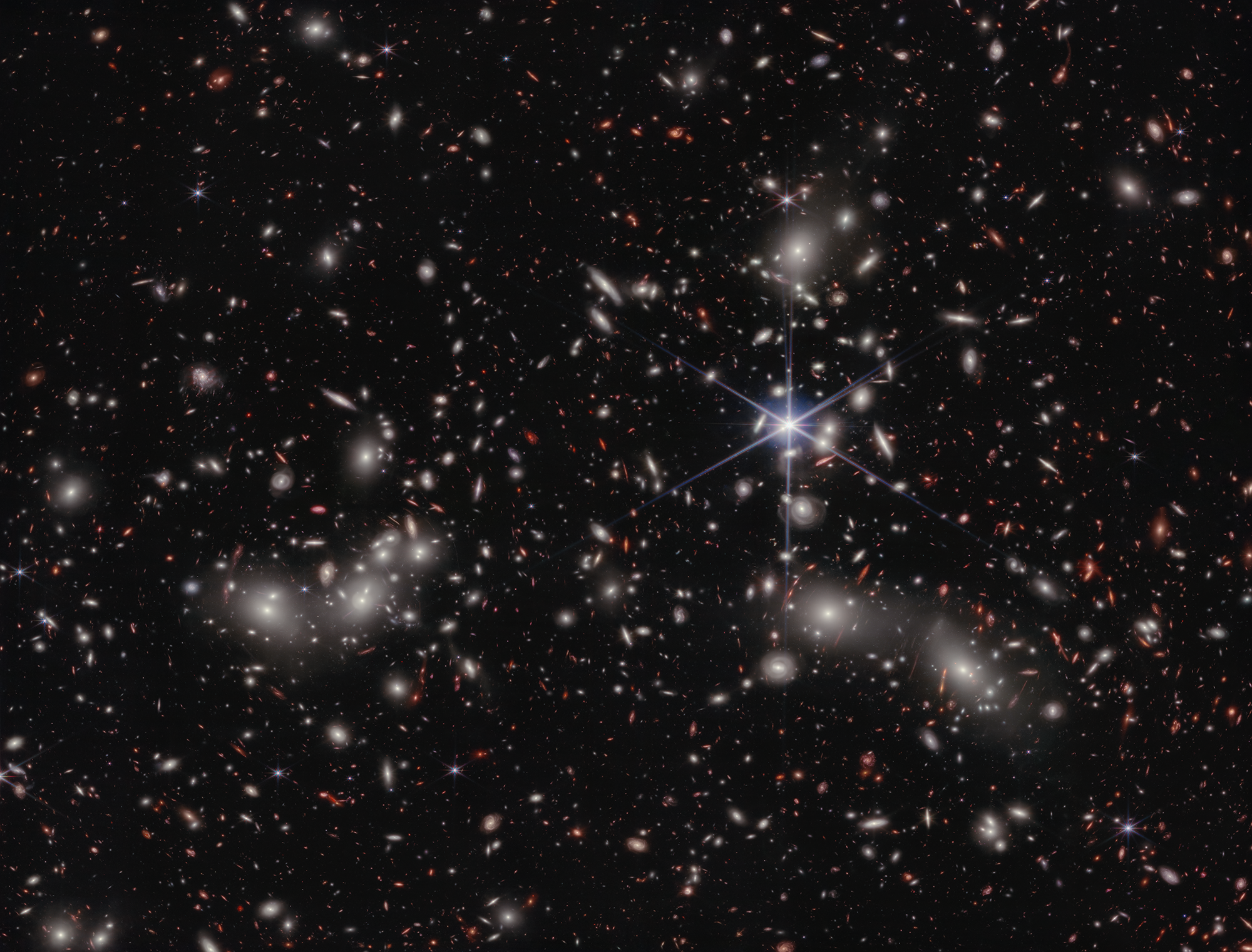News release
From:
Astronomers have revealed the latest deep field image from NASA’s James Webb Space Telescope, featuring never-before-seen details in a region of space known as Pandora’s Cluster (Abell 2744).
Webb’s view displays three already large clusters of galaxies coming together to form a megacluster. The combined mass of the galaxy clusters creates a powerful gravitational lens, a natural magnification effect of gravity, allowing much more distant galaxies in the early universe to be observed by using the cluster like a magnifying glass.
Only Pandora’s central core has previously been studied in detail by NASA’s Hubble Space Telescope. Now, as part of the “Ultradeep NIRSpec and NIRCam ObserVations before the Epoch of Reionization” (UNCOVER) program, astronomers from around the world are achieving a balance of breadth and depth that will open up a new frontier in the study of cosmology and galaxy evolution.
Swinburne Centre for Astrophysics and Supercomputing Senior Research Fellow and co-principal investigator of the UNCOVER program Associate Professor Ivo Labbe says that they’ve revealed hundreds of distant lensed galaxies that appear like faint arced lines in the image.
“Pandora’s Cluster, as imaged by Webb, shows us a stronger, wider, deeper, better lens than we have ever seen before.
“My first reaction to the image was that it was so beautiful, it looked like a galaxy formation simulation. We had to remind ourselves that this was real data, and we are working in a new era of astronomy now.”
The new view of Pandora’s Cluster stitches four Webb snapshots together into one panoramic image, displaying roughly 50,000 sources of near-infrared light.
In addition to magnification, gravitational lensing distorts the appearance of distant galaxies, so they look very different than those in the foreground. The galaxy cluster “lens” is so large that it warps the fabric of space itself, enough for light from distant galaxies that passes through that warped space to also take on a warped appearance.
University of Pittsburgh astronomer and other co-principal investigator Rachel Bezanson says that the ancient myth of Pandora is about human curiosity and discoveries that delineate the past from the future.
“I think [this] is a fitting connection to the new realms of the universe Webb is opening up, including this deep-field image of Pandora’s Cluster.
“When the images of Pandora’s Cluster first came in from Webb, we were honestly a little star struck. There was so much detail in the foreground cluster and so many distant lensed galaxies, I found myself getting lost in the image. Webb exceeded our expectations.”
The UNCOVER team used Webb’s Near-Infrared Camera (NIRCam) to capture the cluster with exposures lasting 4-6 hours, for a total of about 30 hours of observing time. Follow-up observation with the Near-Infrared Spectrograph (NIRSpec) will provide precise distance measurements and detailed information about the lensed galaxies’ compositions. These new insights into the early era of galaxy assembly and evolution can be expected in mid-2023.
All the NIRCam photometric data has been publicly released so that other astronomers can become familiar with it and plan their own scientific studies with Webb’s rich datasets.
“We are committed to helping the astronomy community make the best use of the fantastic resource we have in Webb,” says UNCOVER co-investigator Gabriel Brammer of the Niels Bohr Institute’s Cosmic Dawn Center at the University of Copenhagen.
“This is just the beginning of all the amazing Webb science to come.”
The imaging mosaics and catalog of sources on Pandora’s Cluster (Abell 2744) provided by the UNCOVER team combine publicly available Hubble data with Webb photometry from three early observation programs: JWST-GO-2561, JWST-DD-ERS-1324, and JWST-DD-2756.
-ENDS-



 Australia; International; VIC
Australia; International; VIC



